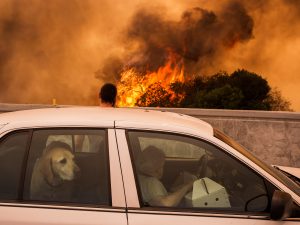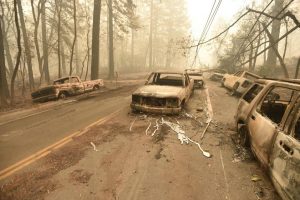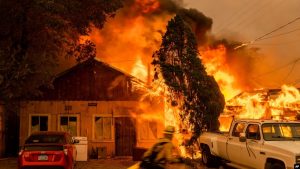This listing includes a wide variety of groups that focus on women’s issues. Most of the organizations that are listed here are based in the U.S. and have a U.S. focus, but some international groups are included, as well. We are not familiar with every group listed below, so inclusion in the listing does not constitute an endorsement.
We‘ve organized the groups into the following categories:
- Environmental
- General
- Political action / representation
- Health / reproductive health
- Legal
- Safety
- BIPOC
- Military / veterans
- International
- Media and films
A few organizations have been listed in more than one of these categories.
ENVIRONMENTAL
- Rachel’s Action Network
- GirlPlanet.Earth
- 500 Women Scientists
- Mothers Out Front
- Moms Clean Air Force
- Rachel’s Network
- WECAN (Women’s Earth and Climate Action Network) International
- Women’s Earth Alliance
- Women’s Environment & Development Organization (WEDO)
- Solar Sister
- Also see: Project Drawdown’s climate solutions page on Family Planning and Education
GENERAL (women’s rights, equality, empowerment, advocacy)
- Equality Now
- National Organization for Women (NOW)
- CAP Women’s Initiative (Center for American Progress)
- National Partnership for Women & Families (NPWF)
- YWCA USA
- Pivotal Ventures (founded by Melinda French Gates)
- A Better Balance
- National Domestic Workers Alliance
- AAUW (American Association of University Women)
- Alice Paul Institute
- Also see: Project Drawdown’s page on Family Planning and Education
POLITICAL ACTION / REPRESENTATION
- League of Women Voters (also find your state’s or city’s/region’s LWV)
- Emily’s List / Women Vote
- Her Bold Move

- The Seneca Project
- Vote Pro-Choice
- Voter Participation Center
- Register Her
- Supermajority
- Red Wine & Blue
- Pantsuit Nation (private FB group)
- Women’s March
- UltraViolet
- Rachel’s Action Network
- Higher Heights for America
- Black Girls Vote
- Deeds not Words (Texas)
- RISE
- Gender on the Ballot
- Barbara Lee Family Foundation
- Harris for President
- Women for Harris
- Democratic Women’s Caucus
- VoteRunLead
- She Should Run
- IGNITE
- Emerge
- RepresentWomen
- WomenCount
- Running Start
- All In Together
- EqualRightsAmendment.org
- ERA YES!
- VoteEqualityUS
- ERA Coalition
- Pro-Choice Caucus
- Planned Parenthood Action Fund
- Reproductive Freedom for All
- Reproductive Freedom Leadership Council
- All Above All
- Reproaction
HEALTH / REPRODUCTIVE HEALTH
- National Women’s Health Network
- Women’s Brain Health Initiative
- National Institute for Reproductive Health
- Physicians for Reproductive Health
- Nurses for Sexual and Reproductive Health
- Forward Midwifery
- Planned Parenthood
- Free the Pill (OTC birth control)
- Power to Decide
- Mayday.Health
- Hey Jane
- All-Options
- FP2030 (Family Planning)
- Ibis Reproductive Health
- Guttmacher Institute
- Also see: Project Drawdown’s page on Family Planning and Education
- Medical Students for Choice
- Grandmothers for Reproductive Rights
- Religious Community for Reproductive Choice
- Catholics for Choice
- Jews for Abortion Access
- Men for Choice
- WRRAP: Women’s Reproductive Rights Assistance Project
- AidAccess
- Plan C
- Whole Woman’s Health Alliance
- Reprocare Healthline
- Just the Pill
- Carafem
- The Brigid Alliance
- Chat with Charley
- Women on Web
- WomenHelpWomen (WomenHelp.org)
- Women on Waves
- Keep Our Clinics
- Power to Decide
- International Campaign for Safe Abortion
- NNAF Abortion Funds
- Black Abortion Defense League
- Abortion Care Network
- AbortionFinder.org
- ARC-Southeast
- Yellowhammer Fund (Deep South)
- WAWC Healthcare (Alabama)
- Lilith Fund (Texas)
- Avow (Texas)
- FWHC (Georgia)
- Trust Women (Oklahoma and Kansas)
- Abortion Action Missouri
- Access Reproductive Justice (California)
LEGAL
- National Women’s Law Center
- A Better Balance
- Tahirih Justice Center
- Time’s Up Legal Defense Fund
- Pregnancy Justice
- Repro Legal Defense Fund
- Center for Reproductive Rights
- If/When/How: Lawyering for Reproductive Justice
- Repro Legal Defense Fund / Repro Legal Hotline: 844-868-2812
SAFETY (from violence / assault)
- National Domestic Violence Hotline: 800.799.SAFE (7233)
- RAINN / National Sexual Assault Hotline: 800-656-HOPE (4673)
- RISE
- It’s On Us
- Protect Our Defenders
- Girls Not Brides
- Moms Demand Action
- Ruthless Kindness
BIPOC women (Black, Indigenous, and People of Color)
- Higher Heights for America
- Black Girls Vote
- Win With Black Women
- SisterSong: Women of Color Reproductive Justice Collective
- Black Women’s Roundtable
- ZORA magazine
- Adelante Mujeres
- Mamas con Poder
- Fos Feminista
- National Indigenous Women’s Resource Center
- Asian American Women’s Political Initiative (AAWPI)
WOMEN IN THE MILITARY / VETERANS
INTERNATIONAL
- Women’s Human Rights Institute
- Women for Women International
- UN Women
- UNFPA
- Equality Now
- CARE
- Pathfinder
- Ipas
- Zonta International
- Engender Health
- International Planned Parenthood Federation (IPPF)
- MSI Reproductive Choices
- FP2030 (Family Planning)
- Ibis Reproductive Health
- SheDecides
- Center for Reproductive Rights
- International Campaign for Safe Abortion
- WomenOnWaves
- Girls Learn International (GLI)
- GirlPlanet.Earth
- She’s the First
- EndFGM Network
- Girls Not Brides
- Global Network of Women Peacebuilders
- Women’s International League for Peace and Freedom (WILPF)
- WECAN (Women’s Earth and Climate Action Network) International
- Women’s Environment & Development Organization (WEDO)
- Solar Sister
- Women and Girls Empowered (WAGE)
- Also see: Project Drawdown’s page on Family Planning and Education
MEDIA
- The 19th
- Rewire News Group
- Jezebel
- Women’s Media Center
- Her Voice Echoes (FB page)
- The Fuller Project
- The Electorette podcast
- Wiser Than Me podcast (with Julia Louis-Dreyfus)
- rePROs Fight Back podcast
- Ms. magazine
- TeenVogue
- International Women’s Media Foundation
- Geena Davis Institute
- The Representation Project
Films (this is just a small selection; we’ll add more to this list over time):
If there are other groups or websites that you think should be added to this listing, please mention them in the Comments.
If you’re on Twitter, also check out and follow our Women’s Rights/Advocacy Twitter list.
Related posts:
#womenslivesmatter #womenarepeople #WomensRightsAreHumanRights #personhood #liberty

 So many life-and-death issues are on the line in the upcoming election: the speed and scale of climate/planetary breakdown (i.e. the habitability of our planet); protecting women’s lives, personhood, bodily autonomy, and medical privacy; protecting Social Security, Medicare, Medicaid, and affordable ACA health care plans; reducing gun violence massacres and tragedies; protecting marginalized and dehumanized groups of people; protecting and expanding workers’ rights and economic justice; the appointment of future Supreme Court justices and other judges whose decisions will have far-reaching impacts on our lives; the handling of future pandemics; and
So many life-and-death issues are on the line in the upcoming election: the speed and scale of climate/planetary breakdown (i.e. the habitability of our planet); protecting women’s lives, personhood, bodily autonomy, and medical privacy; protecting Social Security, Medicare, Medicaid, and affordable ACA health care plans; reducing gun violence massacres and tragedies; protecting marginalized and dehumanized groups of people; protecting and expanding workers’ rights and economic justice; the appointment of future Supreme Court justices and other judges whose decisions will have far-reaching impacts on our lives; the handling of future pandemics; and 
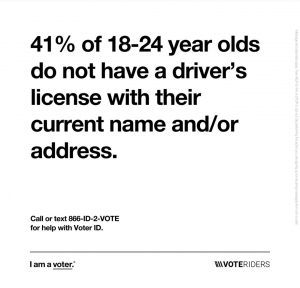
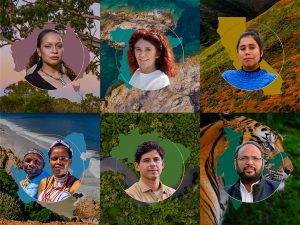
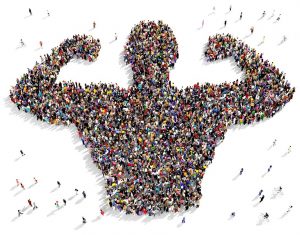



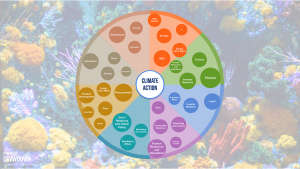
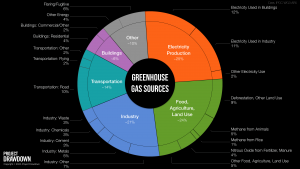


 This is a listing of some legal organizations that I recommend following, learning more about, and potentially supporting. They all use the law to try to serve and support the common good in various ways: to protect humans and human rights, civil rights, and civil liberties; to protect animals and the rights of non-human species; and/or to protect nature, our shared environment, and the livability of our planet.
This is a listing of some legal organizations that I recommend following, learning more about, and potentially supporting. They all use the law to try to serve and support the common good in various ways: to protect humans and human rights, civil rights, and civil liberties; to protect animals and the rights of non-human species; and/or to protect nature, our shared environment, and the livability of our planet.



